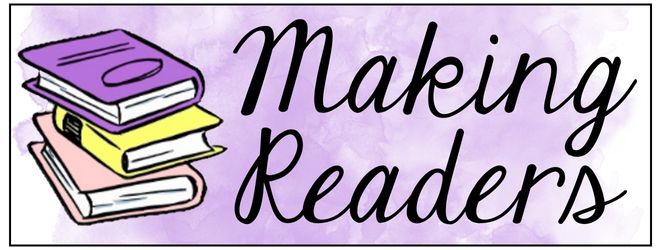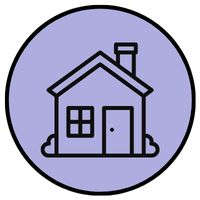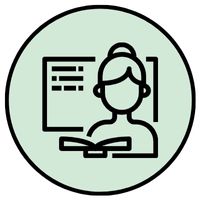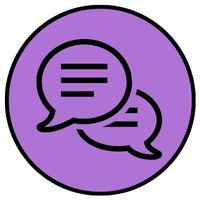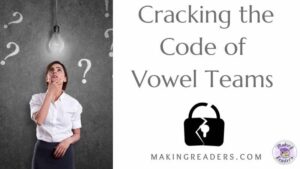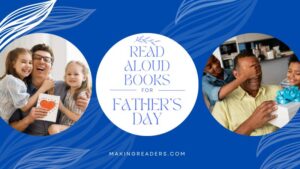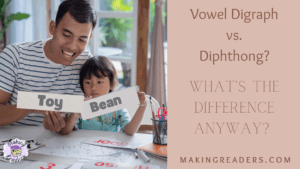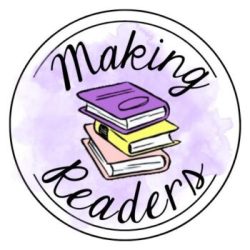In the field of literacy education, there are several buzzwords that are commonly discussed and emphasized. Are you confused by all of these terms? Saying goodbye to your confusion because it is time for the top ten literacy buzzwords in 2024! This post is for new teachers (both classroom and reading) and parents alike. Now please know that some of these words have been around for a long time but I feel like we are hearing them much more now thanks to the Science of Reading. Definitions and clear explanations included.
Here are some current literacy buzzwords:
1. Phonemic Awareness: Phonemic Awareness refers to the ability to hear and manipulate individual sounds (phonemes) in spoken words. It is a crucial skill for developing reading and spelling proficiency.
2. Phonics: Phonics is the method of teaching reading and spelling by focusing on the relationship between sounds and their corresponding letters or letter combinations. It helps students decode words and develop word recognition skills.
3. Fluency: Fluency is the ability to read accurately, smoothly, and with expression. It involves automatic word recognition, appropriate phrasing, and intonation. Developing fluency enhances comprehension and overall reading proficiency.
4. Vocabulary Development: Vocabulary development focuses on expanding students’ knowledge and understanding of words. It includes learning new words, understanding their meanings, and using them effectively in speaking and writing.
5. Comprehension: Comprehension is the ability to understand and make meaning from what is read. It involves actively engaging with the text, making connections, asking questions, and drawing inferences.
6. Explicit and Systematic Instruction: Explicit and systematic instruction is an approach to teaching that focuses on clear and direct instruction as well as carefully sequenced lessons. This method helps students acquire new knowledge and skills in a structured and efficient manner. It involves breaking down complex concepts into more manageable parts and teaching in a step-by-step manner. Students must understand each component before moving on to the next which creates a strong foundation of learning.
7. Balanced Literacy: Balanced literacy is an instructional approach that integrates various components of literacy instruction, including phonics, phonemic awareness, vocabulary, comprehension, and writing. It aims to provide a comprehensive and well-rounded literacy education. (I don’t know about you but I feel like this is not a popular term these days.) Balanced literacy is now being viewed as a poor instructional practice due to the focus on guessing words and leveled instruction. Structured literacy (another buzzword too) is an evidence-based approach to teaching literacy skills, particularly focused on reading and spelling, that is systematic, cumulative, and explicit. It is designed to support students, especially those with dyslexia or other language-based learning differences, in acquiring essential reading and spelling skills. The structured literacy approach emphasizes teaching language concepts in a logical sequence, building upon foundational skills before introducing more complex concepts. The structured literacy approach to teaching reading and writing is designed to be explicit, sequential, and cumulative, breaking down language concepts into smaller, more manageable parts. This approach is particularly beneficial for individuals with dyslexia or other language-based learning differences, but it’s also effective for all learners. Key components of structured literacy are phonology, phonics, syllabication, morphology, syntax, semantics and orthography.
8. Differentiation: Differentiation refers to tailoring instruction to meet the diverse needs of students. It involves modifying teaching methods, materials, and assessments to accommodate various learning styles, abilities, and interests.
9. Culturally Responsive Literacy Instruction: Culturally responsive literacy instruction recognizes and values diverse backgrounds, experiences, and perspectives of students. It involves incorporating culturally relevant texts, promoting inclusivity, and creating a supportive and inclusive classroom environment.
10. Digital Literacy: Digital literacy refers to the ability to find, evaluate, and use information effectively and responsibly in digital formats. It includes skills such as online research, digital navigation, critical evaluation of sources, and digital citizenship. In NYS, we are now required to have a Digital Literacy class and so far the students LOVE it!
These buzzwords represent important concepts and approaches in the field of literacy education. Educators and researchers often focus on these areas to enhance students’ literacy skills and foster a love for reading and learning.
How Can I Incorporate These Buzzwords into Written Lesson Plans?
Here are some examples of how you can incorporate these literacy buzzwords into a lesson plan (possibly for a formal observation):
Phonemic Awareness Lesson:
Objective: Students will identify and manipulate individual phonemes in spoken words.
Activity: Play a phoneme segmentation game where students listen to words and clap or tap out the number of sounds they hear. I have also used colored tiles for this.
Assessment: Say a variety of words to the student and ask them to isolate and say the individual sounds in each word. You want the student to focus on the phonemes, not the letters so it is best for them not to see the word.
Phonics Lesson:
Objective: Students will understand the relationship between the /j/ sound and the “-ge” letter combination.
Activity: Introduce a variety of words with the /j/ sound (e.g., huge, stage, cage) using picture cards. Explain to students that there is soft G and a long G sound. The soft G sound is actually the same sound as the letter J. Have students practice reading the words aloud and sorting them based on whether they have a soft or hard G sound.
Assessment: Provide a set of words (some with “-ge” and some without) and ask students to sort them into the correct category where they have a soft and hard G sound.
Vocabulary Development Lesson:
Objective: Students will expand their vocabulary by learning and using new words related to a specific topic.
Activity: Introduce a new topic, such as “oceans.” Explore ocean-related words through shared reading, discussions, and visual aids. Have students create a web with the vocabulary word in the middle and other synonyms or relevant words around it. If time allows, let them draw a picture as well.
Assessment: Engage students in a writing task where they incorporate the new vocabulary words accurately and effectively. A good example of what you can do is to have the students write a letter to their parents or the principal sharing what they learned about the new vocabulary word(s). Another good assessment would be for them to match the vocabulary word to a picture of the word. This could be made digitally.
Comprehension Lesson:
Objective: Students will demonstrate their understanding of a text by making connections and asking and answering questions. (Using a Next Gen Standard here is a good idea!)
Activity: Read a short story aloud. Model making personal connections to the story and asking questions as you read. You can write your questions on a post-it note and attach them to the pages that you are reading. As you find the answer to the questions, be sure to note this aloud. Have students work in pairs or small groups to discuss their own connections and write down their own questions on post-it notes.
Assessment: Students will need to ask and answer questions about a short text, or they can make predictions or inferences, and then explain their thinking. (This can be done orally or written based on the age of the students.)
Balanced Literacy Lesson:
Just kidding! DO NOT DO A BALANCED LITERACY LESSON! The Science of Reading is now showing us how ineffective balanced literacy was.
Differentiated Lesson:
Objective: Students will demonstrate their understanding of a concept through different learning modalities chosen based on student’s needs and abilities.
Activity: Teach a phonics rule, such as the silent “e” rule. Provide various activities to accommodate different learning styles, such as using manipulatives for kinesthetic learners, flashcards for visual learners, and oral discussions for auditory learners.
Assessment: Assess students’ understanding of the concept through different assessment methods, such as written quizzes, oral presentations, or hands-on projects.
Explicit and Systematic Instruction Lesson:
Objective: Students will be able to identify and apply decoding strategies to accurately read and comprehend text.
Activity:
-
Introduction (5 minutes):
- Begin by reviewing the decoding strategies that you have taught such as phonics rules, syllabication, and sight word recognition.
- Introduce a new text to the class, highlighting challenging words that will require decoding strategies modeling how to use decoding strategies to figure out unknown words.
-
Guided Practice (15 minutes):
- Divide the class into small groups or pairs.
- Provide each group with a different passage containing a variety of words that require different decoding strategies.
- Guide students through the process of decoding unfamiliar words, encouraging them to use the strategies discussed.
-
Independent Practice (20 minutes):
- Distribute individual copies of another text at an appropriate reading ability for each student.
- Instruct students to read the text independently, applying the decoding strategies they have learned. Be sure to add some accountability here by having students show how they figured out each word by boxing or circling vowel teams or digraphs, etc.
- Circulate the classroom to provide support and feedback as needed.
-
Application (10 minutes):
- Reconvene as a class and discuss the decoding strategies used during independent reading.
- Encourage students to share examples of words they successfully decoded and the strategies they applied.
Assessment:
-
Formative Assessment:
- Observe students during the guided and independent practice activities to assess their ability to apply decoding strategies.
- Use anecdotal notes to record observations of students’ decoding skills, what strategies they are using and provide feedback as necessary. More modeling may be needed here.
-
Summative Assessment:
- Administer a brief written assessment consisting of a passage with challenging words for students to decode.
- Evaluate students’ ability to accurately decode words using the strategies taught during the lesson.
Remember to adapt and modify these examples based on the specific grade level, needs, and interests of your students. The key is to incorporate the buzzwords into meaningful and engaging activities that support students’ literacy development.
Still Thirsty for More Trending Literacy Vocabulary and their Definitions?
Me too! Here are some links to more resources that will help you master the literacy world vocabulary:
